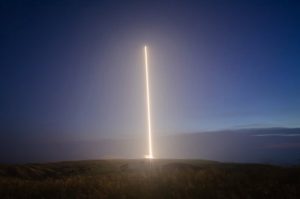If Raphael Zammit is being perfectly honest, his first reaction when someone texted him a photo of Tesla’s new Cybertruck was horror. “I was like, ‘Oh my goodness! What did Tesla do?’” he says. “What did they do?”
Zammit isn’t just a neutral observer. He heads the MFA Transportation Design program at the College for Creative Studies in Detroit, and has been involved in automotive design for a quarter century. And to him, the Cybertruck is “extreme.”
Want the latest news on Tesla in your inbox? Sign up here!
“It literally breaks every rule we tell to our students,” Zammit says. “It’s what we tell them not to do.” No, this is not a truck built for truck designers.
For example: See the top of the vehicle up there, and how thin it is? See the truck’s fine, narrow D-pillar, the slanted back stand that supports the roof? Based on all the triangles involved, there’s no reason to believe that the top of the truck is weak. But the thinness makes it appear to be. Zammit says he and other automotive designers teach students to add a little extra something to make the vehicle look stable, to look strong—even if it doesn’t add much to the engineering.
Yep, this is a vehicle design without compromises. That might be why the initial reaction to the truck, seemingly built to haul carcasses in a postapocalyptic videogame, was a collective “wut.” Those design choices also diverge dramatically from the other products in Tesla’s decade-long existence. Even its Semi, unveiled two years ago and meant to start rolling off production lines next year, is made of elegant, swooping lines.
The interior of the Cybertruck Tesla unveiled Thursday.
Photograph: TeslaWith the Cybertruck (or CYBRTRCK, as Musk styles it), all that refinement goes out the slightly spider-webbed window. “Other car companies keep their form language very consistent for 100 years,” says Lee Walton, a vehicle designer who teaches at Finland’s Lahti University of Applied Sciences. “To completely change the form language at this point in [Tesla’s] history is very, very unusual.”
Here’s another reason the Cybertruck may seem strange: It doesn’t look like it has all of the necessary elements to make it road-ready. The model shown onstage on Thursday night didn’t have side mirrors, which are required in the US (though the federal government is considering changing the rule). Its headlights, a strip of illumination, wouldn’t be street legal. Automotive engineering experts say they’re also worried about the lack of a visible “crumple zone,” built to collapse and absorb the brunt of the force in a forward collision. Tesla did not respond to questions about whether the truck’s design would change before it goes into production in 2021.
For these reasons, the Cybertruck feels more like a concept car, says Walton, and “a really interesting one.” Other carmakers produce “concepts all the time, but then they don’t list them on their website with a ‘buy now’ button.” Yes, you can reserve your Cybertruck right now for $100.
And yet: Zammit, the auto design instructor, thinks the Cybertruck just might be brilliant. His horror turned to a kind of admiration when he heard about the price: $39,900 for the base model, and $49,900 for the dual-motor all-wheel-drive version with 300-plus mile range.
Zammit realized then that the truck’s DeLorean-mated-with-a-Pontiac-Aztek aesthetic might be an effort to streamline the manufacturing process. “By being philosophically so pure and so functional, Tesla has completely eliminated a very large part of what is the traditional automotive assembly,” he says. The company might cut down on expensive tool and die costs by keeping all elements of the car flat, straight, and, frankly, a little weird looking. “Musk might be pulling off one of the most brilliant moves in automotive history,” he says.
Still, someone has to buy the thing to make it successful, and the departure from the usual Tesla brand is confusing. Musk and company have positioned themselves as a bulwark against globe-wracking climate change. But this truck doesn’t look hopeful. Tom Matano, who teaches industrial design at the Academy of Art University in San Francisco, calls the whole thing “anti-humanistic” (though notes he’d like to see the truck on the road before he can really judge it.) Blade Runner, which Musk has said helped inspire his newest creation, is about lab-grown humanoids created to be slaves.
The Cybertruck says, “Pack up your blasters, honey—let’s get the hell out of here.” Maybe that’s the genius, though, to make a truck for the sort of people who might not think of Tesla otherwise. Does that person exist? At the very least, says Walton, “I really admire the balls.”
More Great WIRED Stories
- A journey to Galaxy’s Edge, the nerdiest place on earth
- Burglars really do use Bluetooth scanners to find laptops and phones
- How the dumb design of a WWII plane led to the Macintosh
- Electric cars—and irrationality—just might save the stick shift
- China’s sprawling movie sets put Hollywood to shame
- 👁 A safer way to protect your data; plus, the latest news on AI
- ✨ Optimize your home life with our Gear team’s best picks, from robot vacuums to affordable mattresses to smart speakers.



